Introduction
Temporomandibular joint (TMJ) is the joint between mandible and right and left temporal bones. It is the only movable joint in the head. It helps in mastication and opening and closing of mouth.
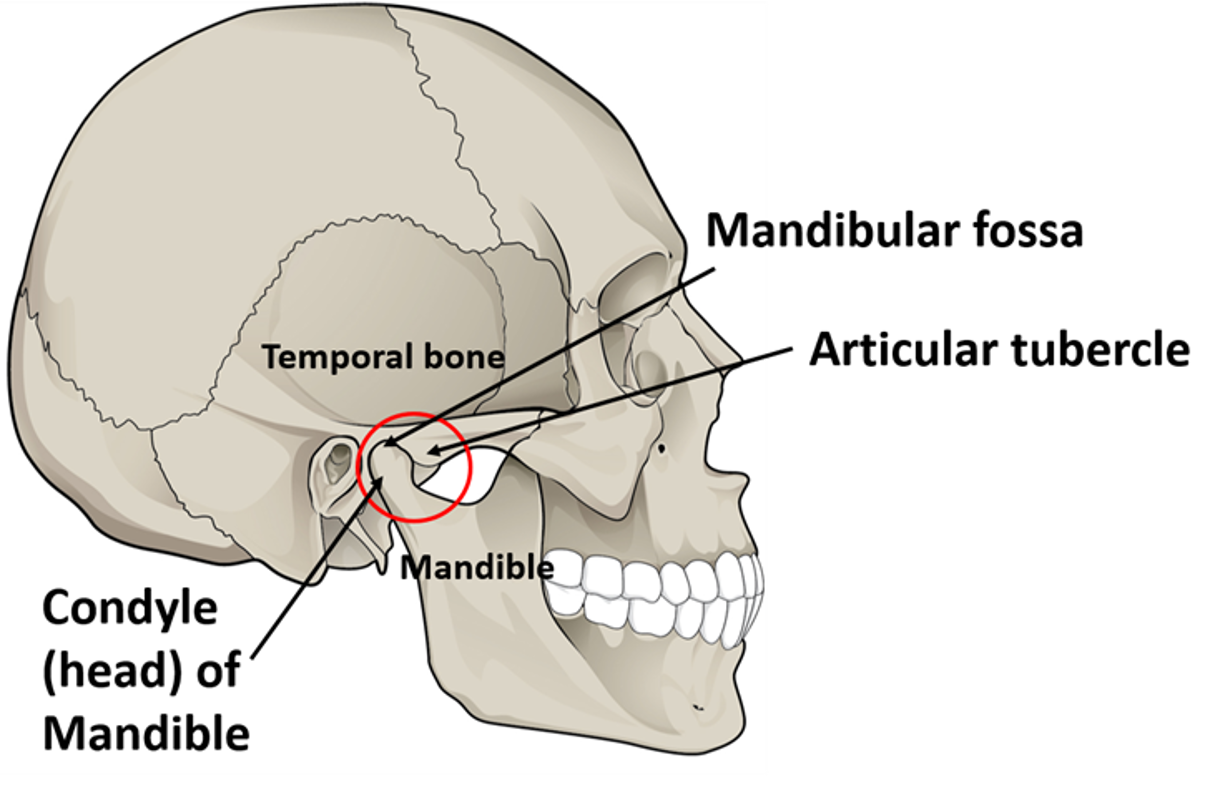
Type and Articular Surfaces
Type: TMJ is a bicondylar variety of synovial joint (both TMJs move together).
Articular surfaces
Superiorly the articular surface is formed by the mandibular fossa on the inferior surface of squamous temporal bone and the articular tubercle in front of mandibular fossa. This articular surface is concavo-convex.
Inferiorly the articular surface is formed by the head (condyle) of the mandible. This articular surface is convex.
The articular surfaces are covered with fibrocartilage.
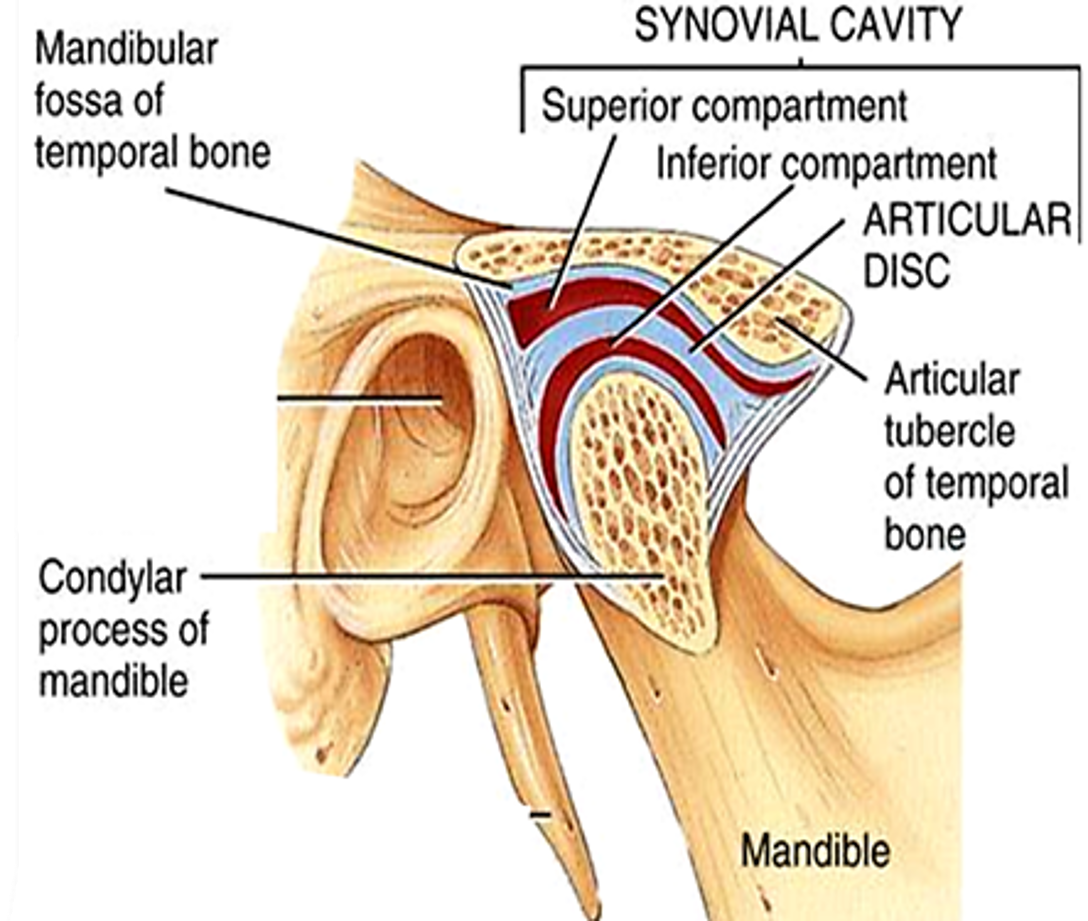
Joint Cavity:The joint cavity of TMJ is divided into two parts by an intra-articular disc of fibrocartilage. It is concavo-convex above and concave below:
- Upper menisco-temporal
- Lower menisco-mandibular
Fibrous Capsule and Ligaments
Fibrous capsule: It encloses the joint, and is loose above the articular disc and close fitting below it. It is lined on the inner aspect by synovial membrane. Its attachments are:
- Superiorly it is attached to the articular tubercle, margins of mandibular fossa and squamotympanic fissure.
- Inferiorly it is attached to the neck of the mandible.
Ligaments: There are two types of ligaments i.e true ligament supporting the capsule and accessory ligaments.
- True ligament is the lateral /temporomandibular ligament. It extends from the articular tubercle above to the neck of the mandible. The fibers are directed downwards and backwards. It is the strongest ligament of the joint and it prevents posterior dislocation of joint.
- Accessory ligaments are:
- Sphenomandibular ligament: It extends from the spine of sphenoid to the lingula of the mandible. It is located on the medial aspect of the joint.
- Stylomandibular ligament: It extends from the styloid process to the angle of mandible.
*Both the accessory ligaments become taut when the mandible is protruded.
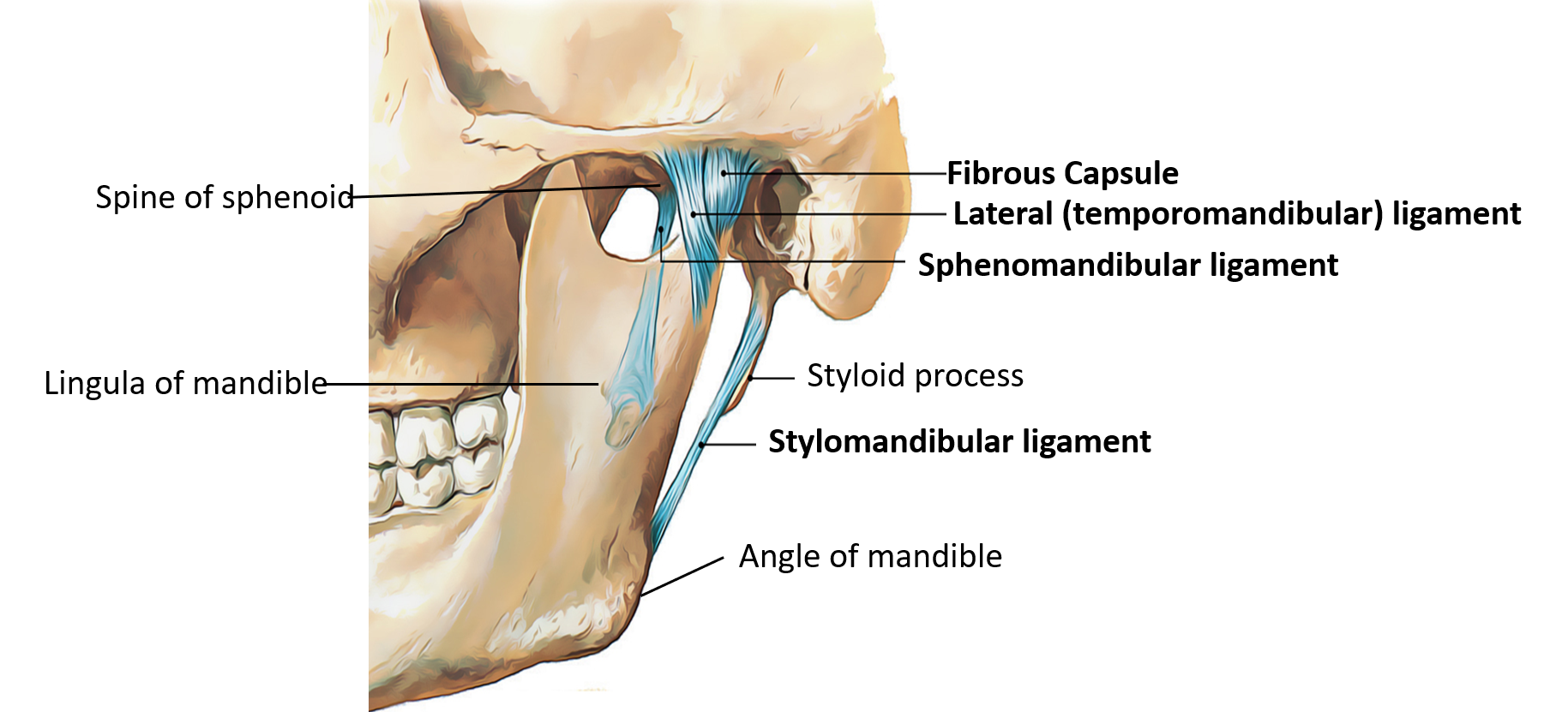
Relations of Temporomandibular Joint
Following are the relations of the joint:
- Anteriorly are the tendon of lateral pterygoid muscle, massetric nerve and vessels.
- Posteriorly it is related to the parotid gland, superficial temporal vessels, auriculotemporal nerve and external acoustic meatus
- Medially are the maxillary vessels, middle meningeal artery and auriculotemporal nerve.
- Laterally it is related to parotid gland, fascia and skin.
- Superiorly is the middle cranial fossa.
- Inferiorly are the maxillary vessels.
Nerve Supply
Temporomandibular joint is supplied by the following nerves
- Auriculotemporal nerve
- Massetric nerve
Movements at Temporomandibular Joint and the Muscles Responsible for Them
All the movements occuring at the temporomandibular joint involve two basic movements:
- Gliding movement : This takes place between the disc & articular eminence (disc+condyle of mandible move together forward or backward).
- Rotational movement: This takes place between the disc and the condyle of mandible.
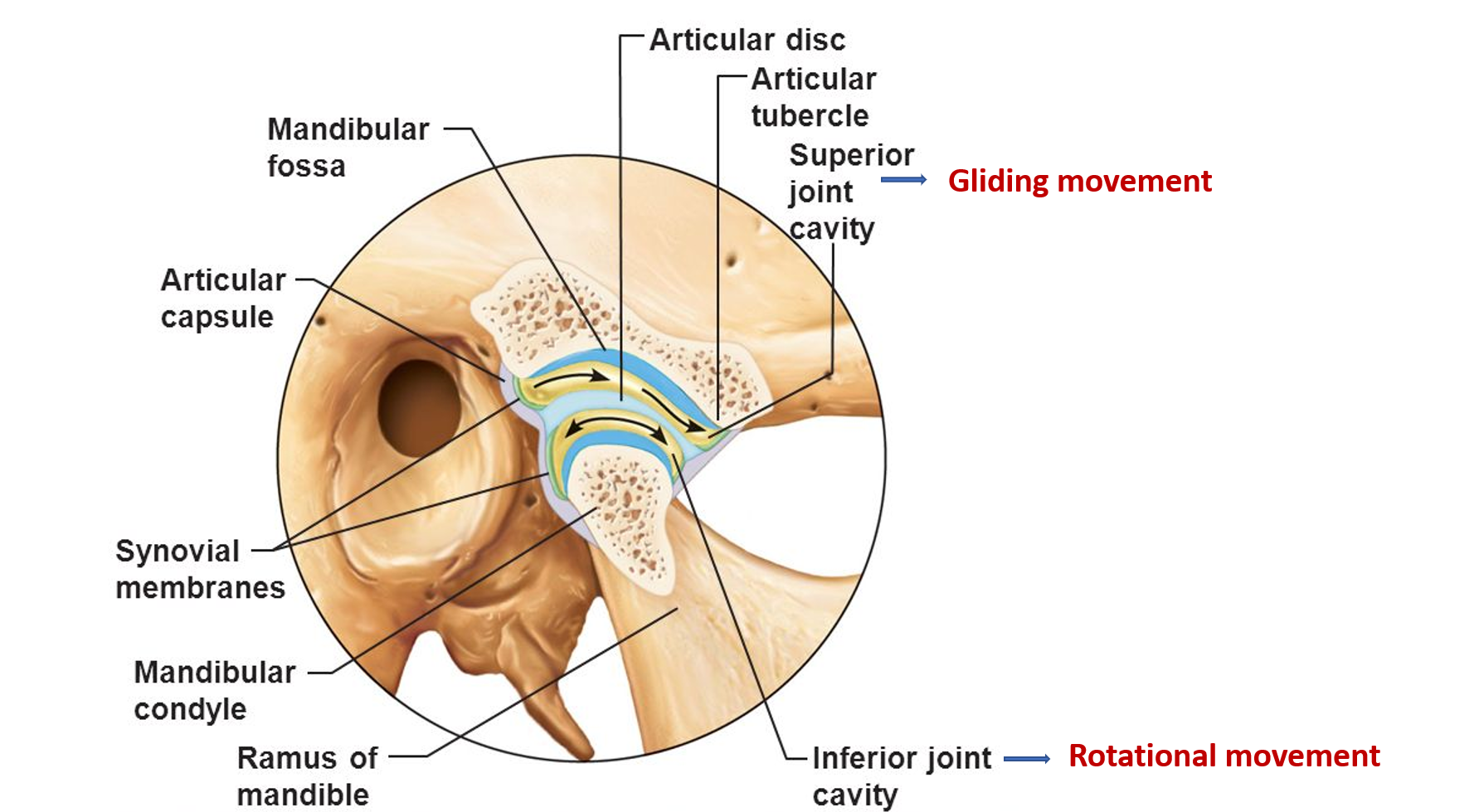
| Movement | Muscles responsible |
|---|---|
| Elevation of mandible | Masseter, medial perygoid and temporalis (anterior fibers) |
| Depression of mandible | Lateral pterygoid, gravity and suprahyoid muscles |
| Protraction of mandible | Lateral pterygoid and medial pterygoid |
| Retraction of mandible | Posterior fibers of temporalis |
| Side-to side (grinding or chewing) movement of mandible | Lateral and medial pterygoids of the two sides act alternately |
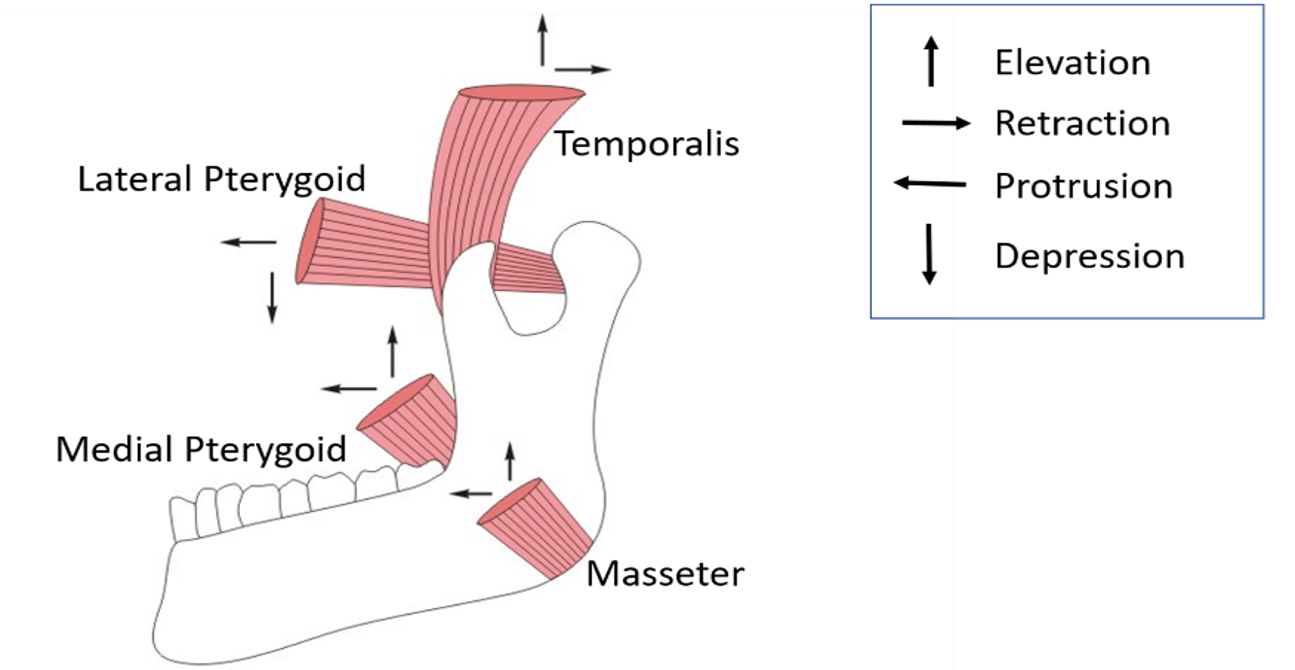
Applied Aspects
Anterior dislocation of mandible
When mouth is opened, the head of mandible comes to lie beneath the articular tubercle. This is the least stable position of joint. In this position the anterior dislocation of head of mandible in the infratemporal fossa may occur due to sudden blow on chin or spasm of lateral pterygoid muscles.
Reduction of the anteriorly dislocated mandible
It is done by pressing the last lower molars with thumbs and at the same time elevate the chin (the head of the mandible is lowered and pushed back into the mandibular fossa).

I just feel my blessed that I found this website. Notes are outstandingly beautiful. Thanks a ton ma’am.